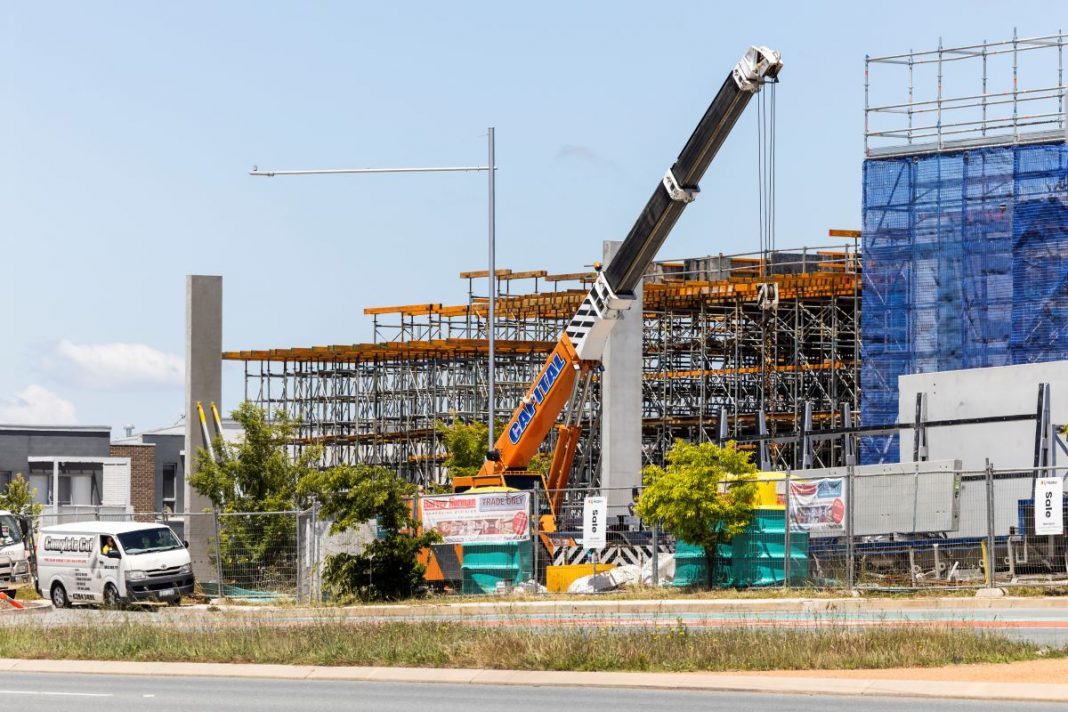The ACT had the largest decline in the number of first home buyers, down 17.2 per cent, in Australia over the September quarter, despite housing affordability remaining stable here.
The latest Real Estate Institute of Australia (REIA) Housing Affordability Report has found that across Australia, housing affordability has continued to worsen as rising interest rates and soaring housing and rental prices continue to bite.
REIA President, Leanne Pilkington said the results come at a time when cost-of-living has never been more on the minds of Australians. Central to that is the cost of holding a mortgage on your home, and the rising costs of a previously affordable rental market.
“It was these two things that characterised the September quarter. Nationally, the outlook for Australians serving a home loan continued to be challenging with the cash rate now at 4.35 per cent. Housing affordability has declined over the September quarter 2023.
“The proportion of income required to meet the average loan repayment increased to 45.5 per cent. Housing affordability has declined over the September quarter 2023, with the proportion of income required to meet the average loan repayment increasing to 45.5 per cent, a marginal increase of 0.1 percentage points.
“Housing affordability declined in NSW, Queensland and SA, remained stable in the ACT, but improved in Victoria, WA, Tasmania and the NT. The NT had the largest improvement with the proportion of income decreasing 1.1 percentage points, while SA had the largest decline with the proportion of income increasing 0.7 percentage points.
“Rental affordability declined with the proportion of income required to meet median rent increasing by 0.5 percentage points to 23.6 per cent. Rental affordability declined in NSW, Victoria, Queensland and SA, but improved in WA, Tasmania, the NT and the ACT.
“The number of first home buyers decreased to 26,928, a decrease of 5.4 per cent during the quarter and a decrease of 4.0 per cent compared to the September quarter 2022. First home buyers now make up 36.0 per cent of the owner occupier dwelling commitments, a decrease of 0.5 percentage points over the quarter but an increase of 3.0 percentage points over the year.
“Over the September quarter, the number of first home buyers decreased in all states and territories. Victoria had the smallest decrease (-0.4 per cent) and the ACT had the largest (17.2 per cent). The Reserve Bank of Australia (RBA) maintained the official cash rate at 4.1 per cent over the September quarter. The quarterly average variable standard interest rate remained stable at 8.5 per cent. The quarterly average three-year fixed rate increased 0.2 percentage points to 6.6 per cent by the end of the quarter.
“The average loan size to first home buyers increased to $503,082. This was an increase of 0.9 per cent over the quarter and an increase of 4.0 per cent over the past 12 months. The average loan size to first home buyers increased in all states and territories except Victoria, SA and the ACT where there was a decline. Tasmania had the largest increase in average first home buyer loans (5.0 per cent) and the ACT had the largest decline (-4.9 per cent).”
Ms Pilkington said the total number of owner occupied dwelling loans decreased to 74,855, a decrease of 4.1 per cent over the September quarter and a decrease of 12.1 per cent over the past year. The total number of loans for owner occupied dwellings decreased in all states and territories over the September quarter. Decreases ranged from 0.8 per cent in Victoria to 15.4 per cent in the ACT.
“Over the September quarter, the average loan size increased to $592,140, an increase of 1.5 per cent over the September quarter but a decrease of 0.6 per cent over the past 12 months. Over the quarter, the average loan size increased in all states and territories except Victoria and the NT.
“Increases ranged from 0.7 per cent in WA to 3.0 per cent in SA. Over the past 12 months, the average loan size increased Queensland, SA, WA and the ACT but decreased in NSW, Victoria, Tasmania and the NT. Increases ranged from 0.2 per cent in the ACT to 6.0 per cent in SA,” Ms Pilkington said.
Get local, national and world news, plus sport, entertainment, lifestyle, competitions and more delivered straight to your inbox with the Canberra Daily newsletter. Sign up here.



